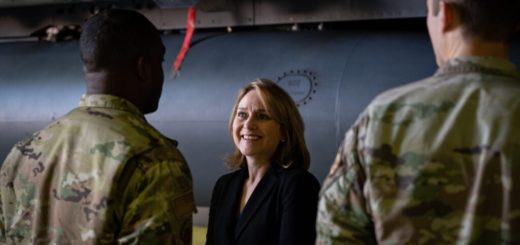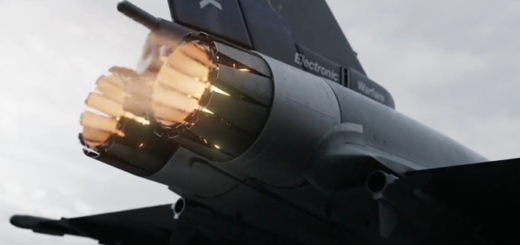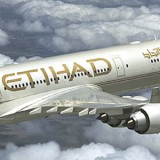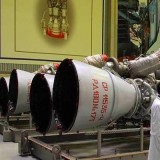France carries out final tests of Rafale fighter jets before delivery to Egypt
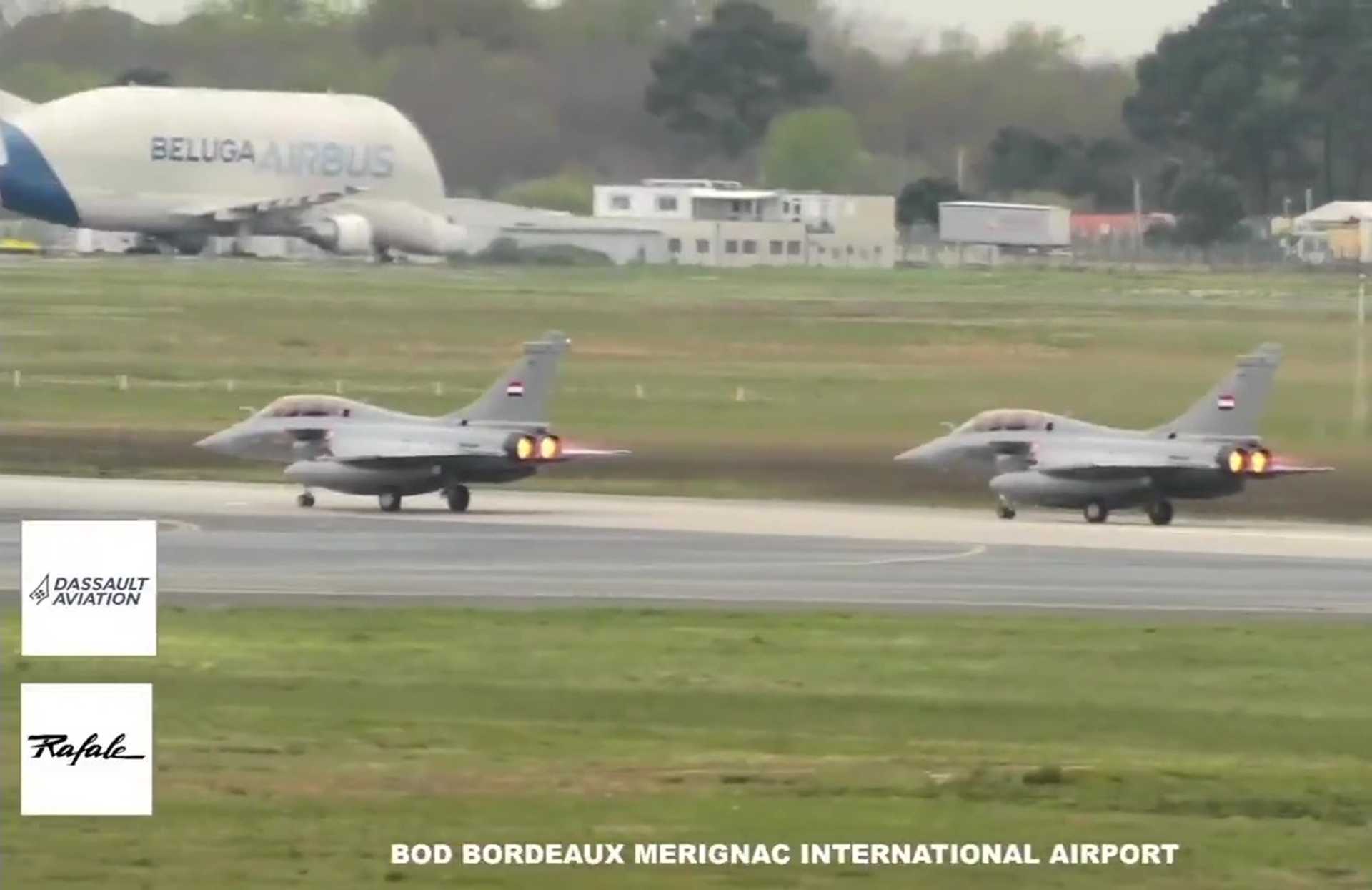
{loadposition bannertop}
{loadposition sidebarpub}
As reported by XL Aviation Spotting on April 6, 2025, the French company Dassault Aviation is conducting flight tests and systems evaluations of two new Rafale aircraft, designated DM18 and DM19, ahead of their transfer to the Egyptian Air Force. These aircraft are part of Egypt’s ongoing procurement of Rafale multirole fighters from Dassault Aviation and follow a series of earlier deliveries and contracts dating back to 2015. The arrival of DM18 and DM19 is linked to the implementation of Egypt’s second Rafale contract, signed in 2021, and contributes to Egypt’s position as the second-largest Rafale operator after France.Follow Army Recognition on Google News at this link
Egypt became the first export customer of the Rafale on February 16, 2015, when it ordered 24 aircraft as part of a $5.9 billion package that also included a FREMM multipurpose frigate and various munitions. (Picture source: XL Aviation Spotting via Twitter/Idtsits)
Egypt became the first export customer of the Rafale on February 16, 2015, when it ordered 24 aircraft as part of a $5.9 billion package that also included a FREMM multipurpose frigate and various munitions. The contract comprised 16 twin-seat Rafale DM and 8 single-seat Rafale EM variants. The first delivery occurred in July 2015, involving three Rafale DM aircraft originally intended for the French Air Force. This initial delivery was expedited so that Egypt could field the aircraft during the inauguration of the Suez Canal expansion in August 2015. All early deliveries were diverted from French Air Force stocks and included modifications, such as the removal of specific French-only equipment. Deliveries continued in multiple batches between 2015 and 2017, including Egypt’s first EM variant in April 2017, and culminating with the fifth batch of three EMs delivered in November 2017. By the end of that year, Egypt had 14 Rafales in service. Deliveries were made directly from Dassault’s facility in France to Gebel El Basur Air Base in Egypt.
Following the first order, discussions about additional aircraft began in June 2016, when Egypt initiated negotiations to exercise a contract option for 12 more Rafales. A delegation visited France in November 2017 to advance the talks. The French Treasury initially opposed further unsecured credit for Egypt, but this opposition was resolved by November 2020. On May 4, 2021, Egypt signed a second contract for 30 additional Rafales, valued at approximately €3.75 billion ($4.5 billion). The deal was made possible after France replaced U.S.-origin components in the SCALP EG cruise missile with French alternatives, allowing its export without restrictions under the U.S. International Traffic in Arms Regulations (ITAR). This contract was financed through a loan repayable over at least ten years, with up to 85% guaranteed by the French state. The agreement also included additional contracts with MBDA and Safran Electronics & Defense valued at €200 million. One extra Rafale was later added to the second contract, bringing the total ordered to 55, including one replacement for an aircraft lost in a crash. This makes Egypt the second-largest Rafale operator globally after France and confirms its sustained commitment to the platform, including potential interest in the future Rafale F4 variant.
The Egyptian Rafales are operated by the 203rd Tactical Fighter Wing, specifically the 34th and 36th Tactical Fighter Squadrons based at Gebel El Basur. The aircraft were used in an operational mission in May 2017, providing escort for a strike package targeting Islamic State positions in Libya. The aircraft have also been used for training and exercises. The Egyptian Air Force surpassed 10,000 Rafale flight hours as of March 2023, becoming the first export customer to reach this milestone. As of April 2025, a new contract for the maintenance of Rafales in Egypt, reportedly valued at approximately €300 million, is expected to be signed. However, no new aircraft orders or naval contracts were concluded during the April 6–8 state visit of French President Emmanuel Macron to Egypt. According to current reports, Egypt is not in a position to commit to major new defense investments, such as replacement aircraft for its F-16s or new submarines.
The Egyptian Air Force surpassed 10,000 Rafale flight hours as of March 2023, becoming the first export customer to reach this milestone. (Picture source: Egyptian MoD)
The Rafale’s development originated in the 1980s after France decided to pursue an independent multirole combat aircraft project, separate from the joint European fighter program that later led to the Eurofighter Typhoon. Development began with the Rafale A demonstrator, which first flew in July 1986. The aircraft entered operational service with the French Navy in 2001 and with the French Air Force in 2006. The Rafale is produced by Dassault Aviation with support from multiple French defense industry partners. It has since been ordered by several countries, including Egypt, Qatar, India, Greece, Croatia, Indonesia, and the United Arab Emirates. As of late 2024, 55 aircraft had been ordered by Egypt, 36 by India, 36 by Qatar, and 80 by the UAE.
The Rafale combines air-to-air and air-to-ground capabilities in a single platform, making it adaptable to multiple mission sets, including air superiority, ground attack, nuclear strike, and reconnaissance. It can operate from both land bases and aircraft carriers. The aircraft includes an electronic warfare suite, radar systems, infrared search and track (IRST), and data-link capabilities. It features a delta wing and canard configuration with digital fly-by-wire controls. Its structure incorporates composite materials, and it is designed to support various weapons configurations across 14 hardpoints. Its avionics system integrates multiple sensors and mission systems to provide the pilot with a consolidated situational picture.
The Rafale is powered by two Safran M88-2 afterburning turbofan engines, each providing 75 kilonewtons of thrust with afterburner. It has a maximum takeoff weight of 24,500 kilograms, a top speed of approximately 1,912 kilometers per hour (Mach 1.8), and a service ceiling of 15,240 meters. It can reach a climb rate of 18,290 meters per minute. In an air-to-air configuration, it has a range of 1,759 kilometers, and its refueling capability extends mission endurance to at least 12 hours. The aircraft has a wing area of 45.7 square meters and uses a high lift-to-drag ratio aerodynamic profile for strong performance across various flight regimes.
In terms of armament, the Rafale carries a 30mm Nexter DEFA 791B internal cannon and supports external stores of up to 9,500 kilograms. Egypt’s Rafale fleet is configured to carry MICA air-to-air missiles, SCALP EG cruise missiles, and AASM Hammer precision-guided bombs. These weapons enable both air combat and strike missions. The MICA provides short- to medium-range engagement capability, the SCALP EG enables deep strikes against protected targets, and the AASM Hammer supports precision engagement of surface targets. These systems form part of the standard combat loadout for Egyptian Rafales.

{loadposition bannertop}
{loadposition sidebarpub}
As reported by XL Aviation Spotting on April 6, 2025, the French company Dassault Aviation is conducting flight tests and systems evaluations of two new Rafale aircraft, designated DM18 and DM19, ahead of their transfer to the Egyptian Air Force. These aircraft are part of Egypt’s ongoing procurement of Rafale multirole fighters from Dassault Aviation and follow a series of earlier deliveries and contracts dating back to 2015. The arrival of DM18 and DM19 is linked to the implementation of Egypt’s second Rafale contract, signed in 2021, and contributes to Egypt’s position as the second-largest Rafale operator after France.
Follow Army Recognition on Google News at this link
Egypt became the first export customer of the Rafale on February 16, 2015, when it ordered 24 aircraft as part of a $5.9 billion package that also included a FREMM multipurpose frigate and various munitions. (Picture source: XL Aviation Spotting via Twitter/Idtsits)
Egypt became the first export customer of the Rafale on February 16, 2015, when it ordered 24 aircraft as part of a $5.9 billion package that also included a FREMM multipurpose frigate and various munitions. The contract comprised 16 twin-seat Rafale DM and 8 single-seat Rafale EM variants. The first delivery occurred in July 2015, involving three Rafale DM aircraft originally intended for the French Air Force. This initial delivery was expedited so that Egypt could field the aircraft during the inauguration of the Suez Canal expansion in August 2015. All early deliveries were diverted from French Air Force stocks and included modifications, such as the removal of specific French-only equipment. Deliveries continued in multiple batches between 2015 and 2017, including Egypt’s first EM variant in April 2017, and culminating with the fifth batch of three EMs delivered in November 2017. By the end of that year, Egypt had 14 Rafales in service. Deliveries were made directly from Dassault’s facility in France to Gebel El Basur Air Base in Egypt.
Following the first order, discussions about additional aircraft began in June 2016, when Egypt initiated negotiations to exercise a contract option for 12 more Rafales. A delegation visited France in November 2017 to advance the talks. The French Treasury initially opposed further unsecured credit for Egypt, but this opposition was resolved by November 2020. On May 4, 2021, Egypt signed a second contract for 30 additional Rafales, valued at approximately €3.75 billion ($4.5 billion). The deal was made possible after France replaced U.S.-origin components in the SCALP EG cruise missile with French alternatives, allowing its export without restrictions under the U.S. International Traffic in Arms Regulations (ITAR). This contract was financed through a loan repayable over at least ten years, with up to 85% guaranteed by the French state. The agreement also included additional contracts with MBDA and Safran Electronics & Defense valued at €200 million. One extra Rafale was later added to the second contract, bringing the total ordered to 55, including one replacement for an aircraft lost in a crash. This makes Egypt the second-largest Rafale operator globally after France and confirms its sustained commitment to the platform, including potential interest in the future Rafale F4 variant.
The Egyptian Rafales are operated by the 203rd Tactical Fighter Wing, specifically the 34th and 36th Tactical Fighter Squadrons based at Gebel El Basur. The aircraft were used in an operational mission in May 2017, providing escort for a strike package targeting Islamic State positions in Libya. The aircraft have also been used for training and exercises. The Egyptian Air Force surpassed 10,000 Rafale flight hours as of March 2023, becoming the first export customer to reach this milestone. As of April 2025, a new contract for the maintenance of Rafales in Egypt, reportedly valued at approximately €300 million, is expected to be signed. However, no new aircraft orders or naval contracts were concluded during the April 6–8 state visit of French President Emmanuel Macron to Egypt. According to current reports, Egypt is not in a position to commit to major new defense investments, such as replacement aircraft for its F-16s or new submarines.

The Egyptian Air Force surpassed 10,000 Rafale flight hours as of March 2023, becoming the first export customer to reach this milestone. (Picture source: Egyptian MoD)
The Rafale’s development originated in the 1980s after France decided to pursue an independent multirole combat aircraft project, separate from the joint European fighter program that later led to the Eurofighter Typhoon. Development began with the Rafale A demonstrator, which first flew in July 1986. The aircraft entered operational service with the French Navy in 2001 and with the French Air Force in 2006. The Rafale is produced by Dassault Aviation with support from multiple French defense industry partners. It has since been ordered by several countries, including Egypt, Qatar, India, Greece, Croatia, Indonesia, and the United Arab Emirates. As of late 2024, 55 aircraft had been ordered by Egypt, 36 by India, 36 by Qatar, and 80 by the UAE.
The Rafale combines air-to-air and air-to-ground capabilities in a single platform, making it adaptable to multiple mission sets, including air superiority, ground attack, nuclear strike, and reconnaissance. It can operate from both land bases and aircraft carriers. The aircraft includes an electronic warfare suite, radar systems, infrared search and track (IRST), and data-link capabilities. It features a delta wing and canard configuration with digital fly-by-wire controls. Its structure incorporates composite materials, and it is designed to support various weapons configurations across 14 hardpoints. Its avionics system integrates multiple sensors and mission systems to provide the pilot with a consolidated situational picture.
The Rafale is powered by two Safran M88-2 afterburning turbofan engines, each providing 75 kilonewtons of thrust with afterburner. It has a maximum takeoff weight of 24,500 kilograms, a top speed of approximately 1,912 kilometers per hour (Mach 1.8), and a service ceiling of 15,240 meters. It can reach a climb rate of 18,290 meters per minute. In an air-to-air configuration, it has a range of 1,759 kilometers, and its refueling capability extends mission endurance to at least 12 hours. The aircraft has a wing area of 45.7 square meters and uses a high lift-to-drag ratio aerodynamic profile for strong performance across various flight regimes.
In terms of armament, the Rafale carries a 30mm Nexter DEFA 791B internal cannon and supports external stores of up to 9,500 kilograms. Egypt’s Rafale fleet is configured to carry MICA air-to-air missiles, SCALP EG cruise missiles, and AASM Hammer precision-guided bombs. These weapons enable both air combat and strike missions. The MICA provides short- to medium-range engagement capability, the SCALP EG enables deep strikes against protected targets, and the AASM Hammer supports precision engagement of surface targets. These systems form part of the standard combat loadout for Egyptian Rafales.

